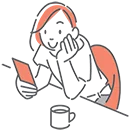 With the release of Mudbox from Skymatter, 3D sculpting and modeling has jumped to a new level. The guys at Skymatter’Weta Digital alum’created this modeling tool based on their personal trials and tribulations in heavy-duty productions such as Lord of the Rings and King Kong. This is somewhat unique because usually there is a separation between the artists doing the work and the developers creating the tools (which results in a slower development cycle because frequently artists will ask for tools and the real need is somehow lost in translation). Fortunately, this is not the case, so the toolset is sleek and refined to the tools that are necessary without a lot of fluffiness.
With the release of Mudbox from Skymatter, 3D sculpting and modeling has jumped to a new level. The guys at Skymatter’Weta Digital alum’created this modeling tool based on their personal trials and tribulations in heavy-duty productions such as Lord of the Rings and King Kong. This is somewhat unique because usually there is a separation between the artists doing the work and the developers creating the tools (which results in a slower development cycle because frequently artists will ask for tools and the real need is somehow lost in translation). Fortunately, this is not the case, so the toolset is sleek and refined to the tools that are necessary without a lot of fluffiness.
Mudbox’s interface is simple and straightforward, tuned to the tasks that the modeler will need to perform. The program is basically a modeler, pure and simple. You can’t animate in it. You can’t light in it. You model in it. Thus its beauty lies in that simplicity. It uses a Maya setup for scene navigation, and you work primarily in a perspective view, which as of this printing, is not available in ZBrush. A perspective view is important because it shows you the model you are working on in a more accurate way. And, yes, it’s far more representative than work in orthographic views.
Not only is the interface simple, but it’s fast and robust. It handles large numbers (tens of million) of polygons without faltering. Mudbox utilizes the available memory efficiently as is, but it also allows you to take objects in the scene and shift it out of memory and onto the harddrive and back. This works on individual objects and faces as well as a model with different subdivision levels, which in turn frees the memory to focus on the pieces you are currently working on.
By far the most ingenious aspect of Mudbox is its layer system which reflects the layers in Photoshop. Different levels or types of detail can be stored on different layers. Then these layers can be turned off and on, blended or spit out as textures for shaders. This feature is amazing while developing iterations of a model. You can create many versions non-destructively by either adding layers with new geometry, or subtly altering layer contribution with the blend slider.
On top of these main features are: exporting displacement and normal maps based on the differences between low-rez and high-rez versions of a model, localized subdivision for adding detail to specific areas without increasing the whole mesh, and specialized paint features like stencils, using curves as brush guides, and symmetrical strokes across many different axes.
Although I’m not a modeler at heart, working with Mudbox is a joy and makes me want to be a real modeler. People who actually have talent in modeling and do it as a profession will more than likely pass out from ecstasy.
Website: www.mudbox3d.com
Price: $299 (basic); $649 (professional)





